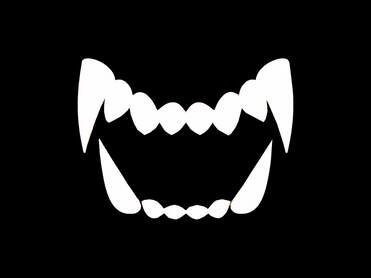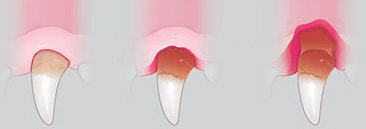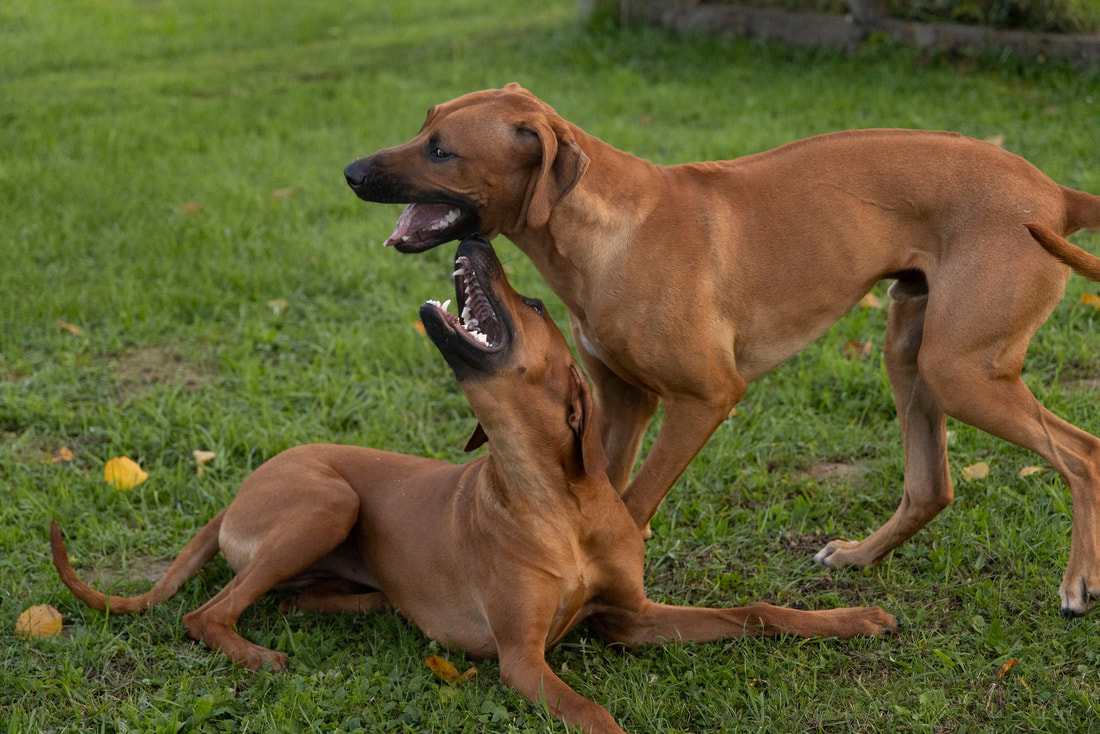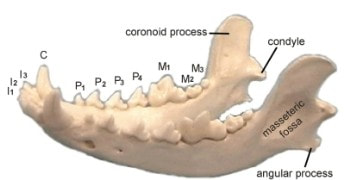|
Dog owners should know that regular cleaning of their dog's teeth is extremely important for their dog's health. As with humans, dogs develop plaque. Plaque is a gummy substance that forms on the teeth within a few hours after a meal. Within 24 hours, plaque begins to harden by combining with salts that are present in the saliva. As the plaque continues to accumulate and mineralize, it eventually transforms into tartar. Tartar, also called calculus, is rough and porous and can develop above and below the gum line. There are two ways that tartar harms the teeth and gums. First, tartar forms a rough surface serving as a place for bacteria to grow and multiply in the mouth. Bacteria can cause inflammation of the gums (gingivitis), which often results in painful bleeding. Gingivitis often progresses to periodontal disease, which leads to further inflammation, pain, and tooth loss (see handout "Dental Disease in Dogs" for further information). As tartar builds up along the gum line, it pushes the gums away from the roots of the teeth. As the gums recede, they expose the sensitive, enamel-free part of the tooth which causes sensitivity and pain and of course your dog will have a really bad smell from the mouth. Second, the bacteria on the tartar can be absorbed into the blood stream and deposited in various organs, including the heart and the kidneys, causing infection. The internet is full of advices on how to brush your dog's teeth on a daily basis, but your dog probably won't find it fun at all. In addition, it is necessary to buy toothbrushes and toothpastes for dogs. But if you ask us, it is more important to buy dental treats and chew toys for your dog to clean his teeth. What we do? :) Every few weeks we give our dogs to chew a raw bone (more about that you can read in our blog - "Bones do and don't"). It is important that the bone is previously frozen and defrozen on the room temperature. When chewing the bone, your dog will perfectly clean the molars, premolars and incisors but since the dog does not use canine teeth for chewing, this is the only tooth you should try to clean. FUNCTIONS OF DOG TEETH INCISORS Dogs have a total of 12 incisors in their mouths consisting of six incisors in their upper jaw and six incisors in the lower jaw. These single-rooted teeth have several functions. If you watch your dog chew on a bone, you'll likely notice that he doesn't seem to use his incisors much, but if you give your dog a bone with some meat attached, you may notice that he'll use this front teeth to rip and scrape the meat off the bone. For sake of comparison, the action is similar to when we remove kernels of corn on a cob. On top of being used to scrape bones, those incisors also come handy for removing burrs from the coat and carrying objects around. CANINE TEETH Right next to the incisors are a dog's canine teeth. Dogs have four canine teeth, two in the top and two in the bottom. When the dog's mouth closes, these canine teeth should intersect nicely when they meet in a scissor bite. Canines are those sharp and pointy single-rooted teeth that are common in meat-eating animals. What are a dog's canine teeth used for? A dog's canine teeth were very important for survival purposes, as they allowed dogs to inflict several stabbing wounds to their prey. They also helped in catching and holding prey and tearing carcasses apart. PREMOLARS Dogs have a total of 16 premolars, eight in the upper jaw and eight in the lower one. They are located behind the dog's canine teeth. Also known as cheek teeth, some of the farthest premolars are only seen when a dog's lips are pulled back. If you watch your dog chew on a toy or bone, you'll likely see him tilt his head to the side so that he can use his premolars. In the wild these teeth are used to rip meat away from bones. The arrangement of these teeth somewhat resembles shears with a serrated blade, an arrangement that helps dogs break food into smaller pieces, courtesy of these teeths' sharp edges. MOLARS There are four molars in the dog's top jaw and six molars in the lower jaw. Often people become aware of their existence only when the vet mentions that one or more of these teeth need extracted. What are a dog's molars used for? We can get a clue from these teeth's flat surfaces. Dog molars are crafted so to allow dogs to grind foods like their kibble and crush bones. Mother dogs also rely on their molars to snip off the pups' umbilical cord. If you notice that canine tooth has some tartar, the best way to take tartar from the tooth is to use a dental tool for taking the tartar from the canine teeth. This is what we do!!! You can buy this tool on ebay, Amazon and other selling platforms. To take a tartar from the tooth, use the tool with wider end and just scratch down the tartar in direction from the root to the top of the tooth. Of course you should do everything slowly. Let the dog smell the tool and prepare treats. Take one stroke of the tool on the tooth, give the treat to dog immediately and continue like this...and in about 15 minutes, the canine teeth will be clean. The most important is that you teach your dog from the puppy age that it is normal to enter his mouth and not to leave his teeth to get tartar.
If you will not care you will soon or later have to sedate your dog to have the vet clean them with an ultrasound, and why to sedate dog if you can continously take care of the teeth?. It is much simpler to do it with raw bones that dogs like to chew and with a dental tool to clean the cacines while sitting with your dog on sofa.:)
0 Comments
Leave a Reply. |
AuthorMaja Kljaić Archives
February 2023
Categories
All
|
|
UZGAJIVAČNICA RODEZIJSKIH RIĐBEKA
RHODESIAN RIDGEBACK KENNEL NEOMELE ul.1.maja 70 Reka, 48 000 Koprivnica CROATIA |
ⓒ 2024 NEOMELE - RHODESIAN RIDGEBACKS
All content and data on this website is protected by copyright.
No part of this website may be used, reproduced or utilized in any form or by any means, electronic or mechanical, without permission in writing from
Neomele kennel/Maja Kljaic & Lela Trescec.
All content and data on this website is protected by copyright.
No part of this website may be used, reproduced or utilized in any form or by any means, electronic or mechanical, without permission in writing from
Neomele kennel/Maja Kljaic & Lela Trescec.















